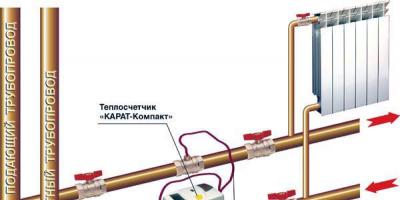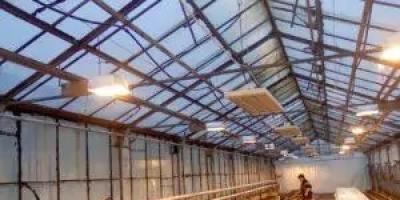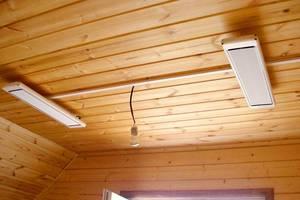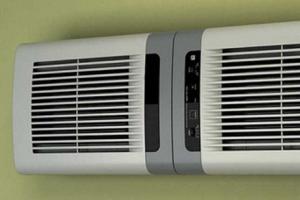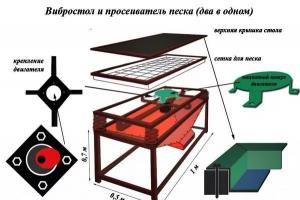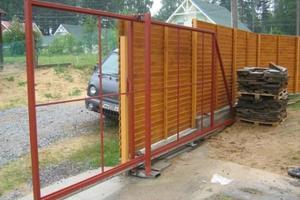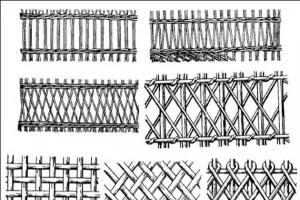Every kitchen has a problem with odors that arise during cooking. This smell can spread throughout the apartment, which is not always pleasant. Yes, and during cooking, drops of fat and oil may fly off from products and food. How to get rid of such problems? There is a way out of this situation, and it is quite simple - install a kitchen exhaust hood. It will get rid of both odors and volatile substances.
What is a range hood?
This is a device installed directly in the place where food is cooked, that is, next to the stove. With its help, hot steam and air, as well as odors and impurities, are removed from the kitchen. Exhaust hoods should match the size of the stove or be slightly larger, but not smaller. Such a device can be installed in the kitchen of an ordinary apartment and even in large catering dining rooms. In this case, it all depends on the size of the hood and its type.
Main types
Such an air purification device can be of 2 types: an exhaust hood and a supply and exhaust hood. The first option is used to filter grease and dust, as well as to remove air from the room. It prevents fat particles from entering common system, they accumulate in a special receiver with filters installed in it. That is why the device, or rather the receiver, needs regular manual cleaning.
The second type of hood performs the same functions - it removes air from the room and cleans it of various elements. But the main difference from the previous type is that in exhaust hoods with supply system one more is running additional function— he pumps fresh air into the kitchen.

Material for making the hood
Both types of hoods are most often made of durable stainless steel. It allows the system to work for a long time without suffering from constant humidity. Caring for this material is easy and simple.
Exhaust hoods for the kitchen clean due to the filters installed in them, which are also often made from steel material. This simplifies the maintenance and cleaning of the equipment. The food-grade steel used in this case has the highest strength indicators, meeting all quality standards.
Some models use special types of stainless steel. They can easily withstand the effects chemical substances of different origins, including acids. But mostly systems made of such steel are installed in production. In addition to steel, another, less durable material, such as aluminum or glass, can be used to produce an exhaust hood. Although similar models- a rare phenomenon.

Types of kitchen umbrellas
Kitchen hoods are divided not only by type, but also by variety depending on the placement method:
- Flat.
- Built-in.
- Dome.
Flat hood
A flat exhaust hood is the most economical. It does not have access to the air duct and works according to circular principle. This system, when compared with other analogues, is quite noisy. There is also a filter in the flat hood that needs to be changed or cleaned regularly.

Built-in exhaust hood
Unlike flat devices, built-in models of exhaust hoods are much quieter. A built-in hood is installed directly above the work surface hob. In addition to the circular mode, embedded devices provide operation in the tapping mode.
The last type is domed exhaust hoods. They are in greatest demand and popularity among housewives. Can be attached various methods to the wall or ceiling. That is, they are divided into 2 subtypes: dome and wall. They operate in circular mode and in air exhaust mode, just like previous models of exhaust hoods. This type of kitchen umbrella has high power and degree of purification of the air of an apartment or house from odors and impurities.

At what height should the hood be mounted?
From what distance from hob the kitchen exhaust hood is fixed, the quality of its work depends. So, for example, if the kitchen has a gas stove, then optimal height to install the hood it will be approximately 80 cm. If the stove is electric, then the hoods should be mounted to a height of about 60 cm. More detailed information By specific models can be found out during their purchase from consultants. It can also be found in the instructions included with the hood.
Filters for exhaust hoods
The main element necessary for the full operation of exhaust hoods is a filter. It is with its help that the air is purified. It can be single-layer or multi-layer, disposable or reusable. Basically, two types of filters are used to clean the air in the kitchen: grease filters and spark-extinguishing filters.
Grease labyrinth filters are designed to retain airborne grease elements. Spark-extinguishing mesh in filters is used if the kitchen exhaust hood is installed in close proximity to the fire source, directly above the stove. If the filter is reusable, then it can be cleaned when dirty with ordinary water, and after that the hood will be ready for use again.

Beneficial features
Any model of exhaust hood has a number of positive characteristics, including:
- Moisture resistance.
- Durability.
- Resistant to all types of dirt.
- Easy to care for.
- Resistance to mechanical damage.
This is primarily due to the fact that most models of exhaust hoods are made of stainless steel. It is easy to clean because it is not afraid of exposure to water and is highly durable. Filters are made from the same material.
But how to install exhaust hoods? It is best to invite a specialist to properly install the exhaust hood. But in some cases, the installation can be done independently. The main thing is to correctly determine the most appropriate place for extraction, and the rest depends only on personal skills.
Exhaust hoods are installed in many places, rooms and establishments associated, first of all, with certain household or culinary and food activities: in kitchens and kitchen shops, in restaurants, cafes, canteens, in the country, in the garden, etc.
Exhaust hood- an important engineering structure that can be very useful even in living conditions, at home or in the country, and in catering establishments it is not at all interchangeable. Let's take a closer look at what it is and why it is needed.
The main purpose

A ventilation umbrella or dome is a device main task which is the ventilation of the airspace of various rooms and territories. Located above the sources high temperature, humidity and various odors, for example above kitchen stoves and cooking surfaces, exhaust domes remove hot air with various unfavorable impurities from the working area, thus refreshing the atmosphere of the room.
The range of tasks of this ventilation device includes purifying the air from many substances that cause harm and discomfort, including: steam, soot and soot, grease, dust, various odors and chemical reagents (acids, salts, alkalis).
Therefore, the scope of application of exhaust hoods is very wide. These structures are installed not only in kitchen areas, but also in chemical and Food Industry, in laboratories and other similar institutions where there is an increased risk of air pollution.
Exhaust dome device

The base of the exhaust hood is a metal vault with an opening connected by an air duct to the ventilation system. Full functioning is ensured special devices, such as:
- Grease filter. Serves to clean air masses from particles of fats and oils.
- Spark arresting mesh. It is necessary when working with sources of open fire.
- Lamps. Additional lighting with lamps built into the dome body.
- Pendants. Mounting elements that support and distribute the weight of the unit.
- Turbines. They ensure the capture and advancement of air flow through filters to the air duct.
Exhaust hoods must be made from materials that have good corrosion resistance and comply with modern sanitary standards. This material is “food grade stainless steel” - a special grade of stainless steel produced specifically for food industry equipment and characterized by increased resistance to aggressive chemical environments.
Many stainless steel ventilation domes are designed using inverter technology to increase durability. argon arc welding. Thanks to this method, the quality of welds, the wear resistance of equipment and the service life of the unit as a whole are increased.
The design of the exhaust hood includes the presence air filter, which can have various functional additions: spark-extinguishing nets, grease traps, “labyrinth” filters, etc. The installed filters are also subject to sanitary and hygienic standards and requirements. In addition, they usually have a very attractive appearance, and the design allows them to be removed for cleaning or replacement.
Types of umbrellas

All modern ventilation units are developed not only taking into account functional, technical and sanitary requirements, but also for design and aesthetic reasons. Of course, turning such a serious unit as an exhaust dome into a decorative element is not easy, but this does not prevent it from fitting perfectly into almost any interior, especially in a production environment.
The appearance of the exhaust hood has some space for decorative design. For example, the outer steel coating can be polished or mirrored, but it can also be matte. Strict shapes, straight lines and shiny mirror surfaces not only look good in production workshops, but also perfectly complement the interior in the style of hi-tech or minimalism.
Exhaust hoods can be divided into two types: household (kitchen) and industrial (industrial). There is no fundamental difference between them, but there are some technical differences. For household modifications, for example a kitchen umbrella, in comparison with industrial ones, the following features are characteristic:
- Smaller dimensions. Such units are designed for standard sizes ordinary kitchen stoves. The air turbine is much less powerful or absent altogether.
- Simpler and more compact grease filters (paper) are used.
These differences are not always clearly expressed. For example, an island-type ventilation dome installed on spacious kitchen in a private house may not differ at all from an industrial one. At the same time, air umbrellas for street barbecues and barbecues, on the contrary, are extremely simplified devices, down to the primitive, representing a metal vault without any additional devices.
However, ventilation equipment located indoors must have a full set of functional elements: turbine, grease trap, spark arrester, etc. This also applies to such units as fume tables and cabinets, which are more related to the chemical industry than to the food industry. They are installed mainly in laboratories.
Design and installation features

According to the type of design, exhaust hoods can be wall-mounted or island-mounted. Wall-mounted models are mounted directly on the wall, directly above the work surface. Island ones have a more complex design, as they are attached to the ceiling and hang over the equipment located near the center of the room, away from the walls. The wall dome has one row of filters, and the island dome has two.
If the wall-mounted umbrella has significant weight and dimensions, additional pendants, brackets and chains are used to assist in fixing the device. To give the structure rigidity and stability, its shape is given a trapezoidal profile. This allows you to increase the maximum permissible area of the dome for hanging over large equipment.
Island-type ventilation units provide air circulation in a much larger volume than wall units. Therefore, they are great not only for forced ventilation air in the center, above objects distant from the walls, but also to ventilate the entire volume of the room as a whole.
The quality and stability of the ventilation dome operation depends not only on the choice of its type and modification, but also on the correct installation of the unit above work area. The exhaust structure must be suspended exactly above the location of active kitchen, industrial or laboratory equipment that pollutes the air: cookers, deep fryers, fryers, burners, containers with chemicals, etc. It is necessary to ensure that the centers of the umbrella and the active surface coincide.
It is important that the dimensions of the exhaust unit are slightly larger than the dimensions of the equipment underneath it.
For ordinary kitchen appliances, a couple of centimeters of difference is enough, but for larger installations, standards require increasing the dome size by 10 cm or more. The height of the structure’s suspension above the working surface should be from 70 to 110 cm.
Conclusion on the topic
Thus, we found out what it is, an exhaust hood, what its structure and purpose are, and we also figured out the types and modifications of dome structures and the intricacies of their installation. This data will help with the selection and purchase of equipment, its operation, maintenance and repair.
The root of construction troubles is hidden in the little things. Neglecting small details, the owner of a private home ineffectively inflates the family budget with repair costs. But if the owner treats the house as an integral organism in which everything is interconnected, his money does not go down the drain, and costs are limited to routine maintenance. Incorrect installation protective devices on the chimney provokes losses - both financial and human.
Installing an umbrella on the chimney helps maintain operation heating system V optimal mode, preventing premature aging chimney, improving air circulation in the house.
Caps and heads on pipes are designed for the following purposes:
- are closing ventilation duct, protecting it from rain, snow and dirt. Lack of protection can lead to accumulation large quantity water in the chimney, which contributes to a decrease in draft and, accordingly, a drop in the efficiency of the heating system;
- protect the pipe material from damage by removing accumulated condensate due to the presence of special grooves;
- prevent insects and birds from falling into the pipe, serve as an obstacle to leaves and branches from falling from trees;
- perform a decorative function. Gives the roof a finished look appearance, especially if the design contains elements of artistic forging.
Note! Using an umbrella you can solve one of the problems of dampness in a house or bathhouse. If the pipe is open to all winds and rain, the moisture that gets into it penetrates into the premises. As a result, walls and floors are affected by fungus, and an unpleasant odor appears in the air.
Some types of caps have a design that creates a rarefied environment in the upper part of the pipe. Due to this, improved draft in the chimney is achieved; excess moisture, exhaust air and combustion products.
The Bastion ventilation plant offers its customers high-quality products manufactured on time. The company is one of the market leaders not only in St. Petersburg, but throughout Russia.
In this article we will talk about the use of exhaust hoods in various conditions.
Operating principle and varieties

In the kitchen of a modern housewife and in catering establishments, an exhaust ventilation hood or dome is installed. Its main task is to purify the indoor air from high humidity, odors, various impurities, the occurrence of which is associated with the cooking process.
The exhaust hood is component high-quality indoor ventilation system. Installation takes place above sources of high temperature, in particular, above stoves, cooking surfaces, and open fire. The dome removes moist hot air, unpleasant odors, as well as soot, grease, soot, dust, chemicals.
Air purification from harmful impurities is also necessary in laboratories, chemical and industrial production etc., where the production process occurs with the release of harmful substances into the space, which can harm workers and environment generally.
The umbrella is a dome-shaped structure, hence the second name – dome. Connected to the ventilation system by an air duct. There are central (island) and wall-mounted, depending on the installation location.
Wall-mounted units are installed directly on the wall. If the weight is large, additional brackets are used for fixation. Central appliances are installed directly above the work surface, without contact with the walls. Island umbrellas have a large capacity.
A modern dome is not only a complex device, but also a decorative element. Factory capacity allows us to produce umbrellas in accordance with the overall interior of the room.
There is no fundamental difference in structure between domestic ventilation domes used in private households and industrial ones; they are distinguished only by size and power characteristics. Umbrellas used indoors have a common structure:
- Grease filter. It can be mesh (made of a mesh with small cells) and labyrinth (a plate with grooves through which condensed fat enters a special compartment). The first type of filter is inexpensive, is installed only in a horizontal position, can be additionally equipped with a spark-extinguishing mesh, but requires frequent cleaning. The labyrinth grease trap is installed only in an inclined position and does not require frequent washing.
- Spark arresting mesh. A mandatory element when installing ventilation domes over sources of open fire, for example, over barbecues and grills.
- Pendants. Part of a mounting system that allows you to mount an umbrella on a wall or ceiling, distributing the weight correctly.
- Turbines. The equipment is designed to stimulate the movement of air masses from the room. When installing, you must correctly determine the center work surface and domes to reach maximum efficiency. The cross-section of the exhaust hood inlet must exceed the dimensions of the stove or other equipment over which it is suspended. The height of the suspension varies from 0.7 to 1.1 meters.
When choosing a manufacturer of an exhaust dome, give preference to domestic factories, so you can save your budget, and the quality of modern products from a reliable seller is confirmed by certificates and quality control.
In rooms where a lot of steam, grease and combustion by-products are released into the air mass (and this is most often kitchens), it is necessary to clean the air in a timely manner. To completely absorb harmful fumes that pollute the air mass, exhaust hoods are installed over sources of unpleasant emissions.
These devices perform the function of timely air purification in catering establishments, kitchens, canteens, restaurants and supermarkets, in the premises of chemical plants
Internal organization
A kitchen exhaust hood is a metal box in the shape of a cap, which is connected through an air duct to the ventilation system. But its functionality increases significantly if its design includes a grease filter that cleans the air mass from oily contaminants and fatty impurities. Most often, an exhaust hood is sold without a fan. Models with a spark-extinguishing grill designed for installation above an open flame have positive responses.
An exhaust hood removes heated exhaust air and pollutants from the room, but does not provide a sufficient amount of fresh air mass. Therefore, it is recommended to install the structure only where there is an influx of fresh air regardless of the device. It is necessary to correctly calculate so that the volumes of extracted and supplied air are the same, only then will comfortable conditions be ensured in the room.
There are also supply and exhaust hoods on sale that not only remove exhaust air, but also pump in new air. Hot air has low density and rises to the top, and is replaced by cold air mass.

The material from which these devices are made is stainless food steel, so when hot air gets into the inner walls of the case, oxidation does not occur. Advantages of stainless steel:
- resistance to corrosion processes;
- durability;
- fire resistance;
- ease of care;
- resistance to moisture and steam.
The seams of the body are treated with argon welding, therefore they are characterized by increased strength. Main element metal structure– grease trap.
The exhaust hood for the air duct consists of two parts:

The operating principle is simple. The air mass with particles of fat, soot and soot enters the filter device. Here the air hits the internal bridges of the filters with force and is purified (during impacts, combustion by-products and the air mass itself fall apart).
After purifying the air, the fatty compounds in liquid form slowly settle and move through the drain channel into the receiving tank, which is located at the bottom of the device. After completion of the work, this container is emptied and thoroughly washed with an anti-grease agent. To clean the glass faster next time, pour 4-5 drops into it in advance. detergent. For ease of use, the filters and reservoir plugs are removable and can be easily removed, cleaned and reinstalled.
Classification of exhaust hoods
Depending on the scope of application, exhaust hoods are divided into two types:

- household
These are two separate concepts, but the difference between them is internal device is small.Industrial exhaust hoods have the following features in comparison with household appliances:
- large dimensions;
- high fan performance;
- use of other types of grease filters.
IN household models Dimensions are adjusted to the dimensions of gas and electric stoves used in houses and apartments. True, the difference between an exhaust device operating in a kitchen is huge. country house, and there is practically no industrial model.
Depending on the location, exhaust hoods are:
- Wall-mounted – simple devices, which are attached directly to load-bearing wall over heating appliances. The filters inside such models are located in one line.
- Island - these structures are attached directly to the ceiling with studs or chains above the equipment in the middle of the room. Such models have two rows of filter devices.
 There are also outdoor models for barbecues and grills, which are an empty dome inside without additional elements
There are also outdoor models for barbecues and grills, which are an empty dome inside without additional elements
They trap smoke, heated air and fatty impurities. The principle of their operation differs from the devices; they operate thanks to umbrella-transitions, which are shaped like a cone. Conduct preliminary calculations It is more difficult to install them correctly, but they can be used over an open flame without fear. But devices used indoors are often equipped with a fan, purifiers, and a grill. There are also complex designs called a fume hood table, but they are not used in everyday life and in food factories, as they are intended for chemical laboratories.
Characteristics of exhaust hoods
Kitchen hoods are used everywhere, as these devices are easy to maintain and operate. The main thing is not to forget to promptly clean the storage container from oily contaminants. Compliance with the rules of use and safety measures when working with such equipment will not be difficult.
Stainless steel exhaust hoods are manufactured in strict accordance with current standards and regulations for the production of food industry equipment. Manufacturing of exhaust hoods from quality materials– the key to their successful and safe work in future. Therefore, the use of this ventilation equipment is safe both for people in the room and for the atmosphere. No during work harmful substances do not stand out.
The choice of exhaust equipment is wide. There are kitchen hoods on sale in any color, configuration and size.
 The device is selected in accordance with the interior style
The device is selected in accordance with the interior style
If the presented models do not meet the client’s requests, it is also possible to manufacture ventilation hoods to order. Many companies offer the opportunity to arrange individual production of a custom-made ventilation structure according to the developed drawings.
It is important to choose the right device with the required performance. If the device does not perform its functions well, then there is no point in installing it at all. If the device works at its maximum, it will fail faster, and the energy costs will be significant. Power is the most important characteristic of the device. For high-quality air purification in an ordinary kitchen, a device with a capacity of 500-650 m3/h is sufficient. For catering establishments, industrial devices with a capacity of up to 1800-1900 m3/h are suitable.
Since in many enterprises there is a problem of oily impurities settling on the surfaces of devices, exhaust hoods with grease filters are deservedly popular. An exhaust hood with a grease trap works on the following principle: the contaminated air mass enters inside by self-propelled force or with the help of a fan, where the grease settles and flows off the tank, and fresh air meanwhile enters the air duct. Grease filters come in different types:
- cassette,

- from paper.
The control system can be different: push-button, electronic, touch. Push-button controls are easy to understand for people of all ages, but they cause a lot of inconvenience when cleaning (dust, dirt and grease collect near the buttons, which is difficult to clean). Touch panels are more practical, but not as easy to understand for older people. It is easy to care for the electronic panel: just wipe its surface regularly with a soft sponge.
Installation of exhaust hoods
There are traditional ways to install ventilation umbrellas:
- Using anchors. This method is considered the simplest. But the main condition is that the wall must be load-bearing, level and strong (stone or brickwork). Based on the length of the device, calculate the number of holes (2 or 3). Carefully and symmetrically place marks for drilling on the back vertical wall of the umbrella. Holes are drilled through which the umbrella is attached to the wall using anchors. If the overhang is more than 100 cm in length, then the device is additionally attached to the ceiling.
- Using hairpins. 4 holes are drilled at the top of the four edges of the apparatus (ears for the studs are welded). The studs are pre-fixed to the ceiling. Everything is simple, but one condition must be observed - the height of the room should not exceed 4.3 meters.
- On cables and chains. This method can be used to secure the exhaust hood at any height. 4 brackets are welded in the upper plane of the device. Cables or chains are attached to the ceiling and secured via a carabiner to the apparatus. The only disadvantage of this design is its instability, which creates additional inconvenience when tying air ducts.
- Special support frames. Depending on the size of the umbrella, a support frame is made from a stainless steel profile with four legs, which are securely attached to the floor through plates. The device is installed on it. The design can be rectangular or square, the height is set individually. Such designs look presentable and neat. Therefore, in rooms with high ceilings and equipment located in the middle, this option is the most optimal.
 Exhaust hoods are mounted not only over stoves and hobs, but also over other heat-producing appliances (grill, oven or deep fryer)
Exhaust hoods are mounted not only over stoves and hobs, but also over other heat-producing appliances (grill, oven or deep fryer)
When choosing exhaust hoods, take into account the dimensions of the stove or hob, above which the device will be mounted.
The device (exhaust hood over the stove) must be at least 10-15 cm wider than the stove. The mounting height above the equipment ranges from 0.7 to 1.1 m.
The location of the kitchen hood is determined by the location of the stove. If the equipment is located near a wall, then exhaust device It is advisable to install on the same surface.

It is not difficult to install an exhaust hood with your own hands for a person who has at least a little knowledge of construction, repairs and tools. When installing, you must follow these instructions:
- Determine the location of the exhaust hood on the wall, taking into account all dimensions: 10 cm wider than the slab and 70-75 cm higher.
- Cover kitchen set film or paper to facilitate cleaning after completion of work.
- Take a circular saw and cut an opening in the ceiling the right size for the air duct.
- Using a long drill, drill a hole (1 cm) in the center of the resulting opening - this will be the center of the air duct.
- Using chalk or a felt-tip pen, draw a circle on the outside of the roof, starting from the drilled hole.
- Carefully saw through the roof covering and lower sheathing.
- Place the fan for the exhaust hood in the hole cut in the roof.
- Secure the pipe and flange, fill the voids at the joint with sealant.
- At the bottom, fix the pipe with the ventilation channel.
- Connect the fan motor to the outlet and lead the cable inside to the kitchen through the ceiling.
- Take a flexible channel and connect it to the pipe. Check all connections for strength, wrap them in foil to seal.
- Fix the brackets to the wall with screws and hang the umbrella on them.
- Connect the fan cable to the outlet.
It is easy to install a household exhaust hood, and it is better to entrust the installation of large models to the workers of a reliable company. It is easiest to install a kitchen exhaust hood without a fan. The main thing is to adjust the umbrella closer to the chimney pipe or air duct, then the polluted air will be easily discharged outside.
WATCH THE VIDEO

